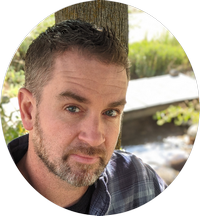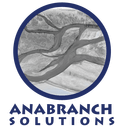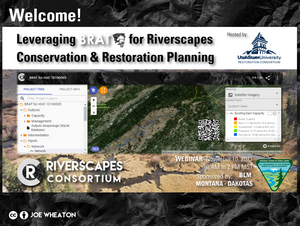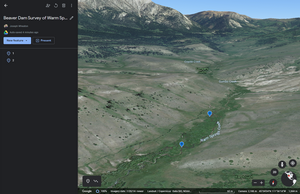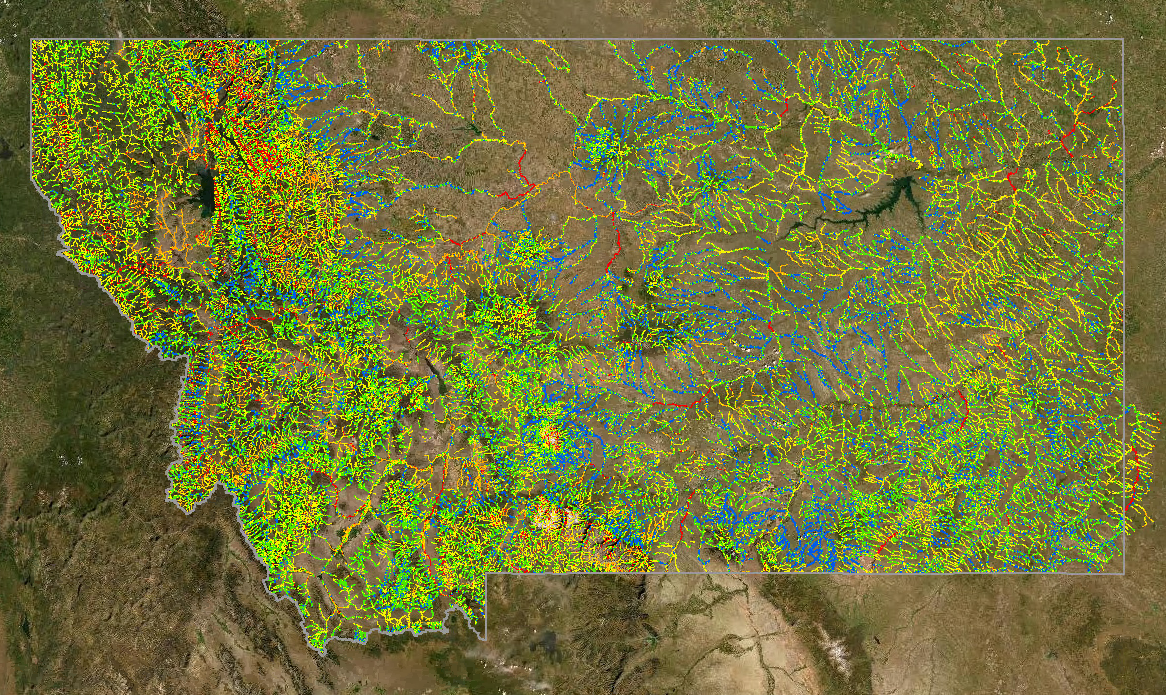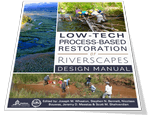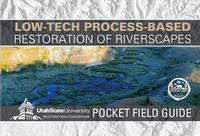November10, 2021 10 AM to 2 PM MST
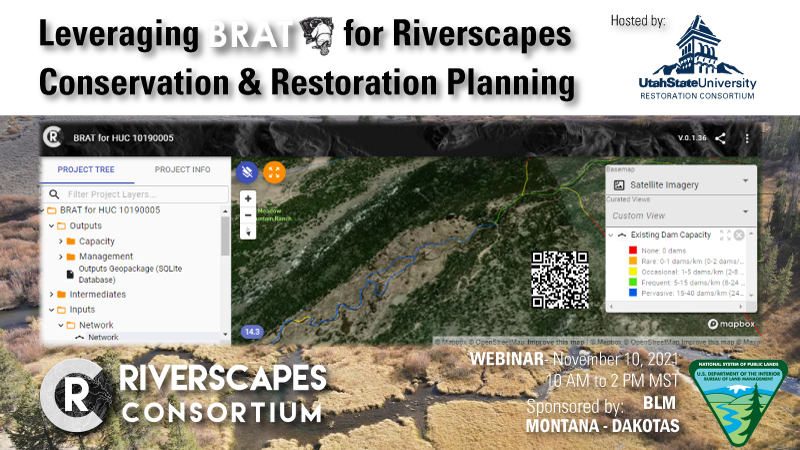
Webinar will be conducted on Zoom: Zoom Link. No advanced registration is necessary. Just show up at 10 AM MST. For those that cannot make it, the webinar will be recorded and posted to this page.
Webinar Purpose
 Overview of Beaver Restoration Assessment Tool, the model outputs, and how to use it for LTPBR planning specifically in Montana/Dakotas.
Overview of Beaver Restoration Assessment Tool, the model outputs, and how to use it for LTPBR planning specifically in Montana/Dakotas.
Format / Agenda
There will be a mix of lecture, interactive desktop exercises, and discussion throughout. Rough Agenda:
- 10:00 to 10:15 - Introductions & Agenda Overview
- 10:15 to 11:00 - Overview of Montana BRAT and its Applications – (including 15 minute Q&A) to serve broadest possible audience
- 11:00 to 12:00 - Making BRAT work for me in my rivercape – demo and illustration of using BRAT outputs in a locality to support the LTPBR conservation planning process and/or adaptive beaver management plan.
- 12:00 to 12:30
- 12:30 to 1:45 How does BRAT actually work? – to serve a more self-selecting audience of folks who want to understand what the model does.
- 1:45 to 2:00 -BRAT field assignment – 15-minute assignment illustrating how to interrogate and apply BRAT on a specific stream reach.
The webinar will be recorded and all webinar resources will be posted on this page as a resource following the live event.
Webinar Sponsor
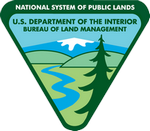 Thanks to the generous support of the Bureau of Land Management’s Montana/Dakotas Office. Specifically, this webinar was envisioned by Alden Shallcross (Hydrologist – State Lead: Aquatic Habitat Management) to support the overall improvement of riverscape health.
Thanks to the generous support of the Bureau of Land Management’s Montana/Dakotas Office. Specifically, this webinar was envisioned by Alden Shallcross (Hydrologist – State Lead: Aquatic Habitat Management) to support the overall improvement of riverscape health.
Webinar Audience
The target audience for the webinar is BLM staff and partners in conservation throughout Montana and the Dakotas. The webinar will help those interested in maintaining or improving the health of riverscapes with low-tech PBR and the help of beaver.
Webinar Host
Preparation Prior to Webinar
- Read/Skim Chapter 3 of design manual. We will be discussing tools that help estimate riverscape health condition and potential (described in Chapter 2 ) and address questions posed during planning (discussed in Chapter 3 and its Appendices) .
- If you don’t already have a RC Warehouse account, create an account at the Riverscapes Consortium’s Warehouse. See here if you need instructions or assitance creating an account.
- Once you have created an account, get access to the “BLM Montana and Dakota’s” program by filling out this form. See here for instructions
Optional
We will do this in exercises during workshop, so if you don’t get to this ahead of time, do not panic.
- Optionally, install RAVE, download the example projects we will use for demos, and unzip locally:
See here if you need instructions on downloading data
- Optionally, explore MNH’s Montana BRAT map and come up with questions.
Slides, Videos & Exercises
1. Roll Call and Agenda
1. Roll Call and Agenda Alden provided an introduction and overview of why we're here and we went around and met all the participants.2. BRAT Introduction
2. BRAT Introduction. We started with a very high-level overview of what BRAT is and isn't.3. WebRAVE GIS and Riverscapes Context
3. WebRAVE GIS and Riverscapes Context We spent some time looking at a rivercapes context project to get familiar with webRAVE and where the freely available national data we can run BRAT with comes from.4. Motivation - Healthy Riverscapes
4. Motivation - Healthy Riverscapes5. Partnering With Beaver
5. Partnering With Beaver. We talked about both the rationale for partnering with beaver, as well as the specific ways we do to promote the process of beaver dam activity. We did an exercise together, below to identify beaver dams from aerial imagry.Dam Count Exercise
On Warm Springs Creek in Google Earth, we counted the number of beaver dams from French Gulch confluence upstream to the Gumbo Creek confluence. You can use the Google Earth placemark feature to keep track. See how here:
How many beaver dams did you count?
6. BRAT Overview
6. BRAT Overview We started with exploring the capacity model before lunch and then picked this up after lunch. We sent people to the [BRAT Models](#our-example-riverscapes-projects-we-will-use-for-demos) for an example. Note: the video transitions rather abruptly from before to after lunch and before and after the break out sessions.7. BRAT Data in WebRAVE
7. BRAT Data in WebRAVE. We explored the inputs and intermediates used to create capacity models outputs in WebRAVE to better understand what we were looking at.8. Understanding BRAT's Capacity Model
8. Understanding BRAT's Capacity Model We used the BRAT CIS paper form to do a group exercise to "run the model" with just a look up table.9. BRAT - Risk and Opportunity
9. BRAT - Risk and Opportunity. We sort of ran out of time to cover what goes into the managment outptus in much detail, but we provided a cursory overview.10. BRAT - Conclusion
10. BRAT - Conclusion. We wrapped up the webinar here before inviting questions .Post Webinar Questions and Discussion
11. Post-webinar Questions Joe answers questions regarding using BRAT in a restoration work flow, how BRAT quantifies the force of flood flows, and discusses water storage by beaver dams.Resources
References
For BRAT the main publication is Macfarlane et al. (2015).
- Macfarlane W.W. , Wheaton J.M., Bouwes N., Jensen M., Gilbert J.T., Hough-Snee N., and Shivick J. 2015. Modeling the capacity of riverscapes to support beaver dams. Geomorphology. DOI: 10.1016/j.geomorph.2015.11.019.
Model

 The Beaver Restoration Assessment Tool (BRAT) was developed by the Riverscapes Consortium over the past decade. Generous support has made the tool and its outputs freely available.
The Beaver Restoration Assessment Tool (BRAT) was developed by the Riverscapes Consortium over the past decade. Generous support has made the tool and its outputs freely available.
 The current version of BRAT we will be exploring outputs is a production-grade
The current version of BRAT we will be exploring outputs is a production-grade  tool that is run in the cloud on AWS.
tool that is run in the cloud on AWS.
 The old version of BRAT (refered to as pyBRAT) produces very similar outputs (in shapefiles instead of geopackages), but is a operational-grade
The old version of BRAT (refered to as pyBRAT) produces very similar outputs (in shapefiles instead of geopackages), but is a operational-grade  tool with ArcPy dependcies that is run manually on one’s machine.
tool with ArcPy dependcies that is run manually on one’s machine.
BRAT Capacity Inference System - Paper Form
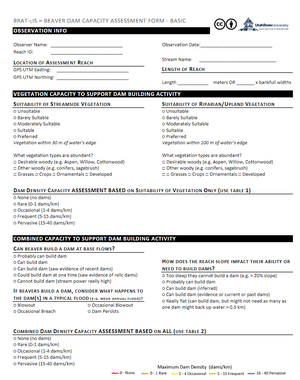 Although “running” BRAT in the cloud or locally requires a high degree of GIS expertise, any one can “run” the model by answering some simpe questions and using a look up table. One of the exercses we will do is fill out the BRAT CIS form.
Although “running” BRAT in the cloud or locally requires a high degree of GIS expertise, any one can “run” the model by answering some simpe questions and using a look up table. One of the exercses we will do is fill out the BRAT CIS form.
Montana BRAT Data
In Montana/Dakotas, BLM has made these outputs available through both the Riverscapes Warehouse and through Montana Natural Heritage’s Montana BRAT project.
Our example Riverscapes Projects we will use for demos:
There are 115 HUC 8s (view this USGS map to find your HUC) in Montana, 55 in North Dakota, and 56 in South Dakota. As part of Montana Natural Heritage’s Montana BRAT project, pyBRAT was run for 172 of these HUC 8s (that intersect some BLM land) . In this workshop we will use these three HUC 8s as examples to get to know BRAT:
- BRAT for HUC 10090102 (Lower Tongue Watershed) as a Eastern Montana Example
- BRAT for HUC 10040204 (Box Elder Watershed) as a Central Montana Example that corresponds to where we taught the 2019 WLFW NRCS Low-Tech Riparian Restoration Workshop (In Roy for fieldwork and Lewistown for classroom)
- BRAT for HUC 10020003 (Ruby Watershed) as a Western Montana Example
LTPBR Manual
For the webinar, we will refer to the Design Manual and the Pocket Guide, which are both available free digitally.
- Wheaton J.M., Bennett S.N., Bouwes, N., Maestas J.D. and Shahverdian S.M. (Editors). 2019. Low-Tech Process-Based Restoration of Riverscapes: Design Manual. Version 1.0. Utah State University Restoration Consortium. Logan, UT. 286 pp. DOI: 10.13140/RG.2.2.19590.63049/2.
Chat Log
This is mainly just links that were shared as we went and a few questions and answers.
| Time | Who & Comment |
|---|---|
| 10:10:38 | Joe Wheaton : For reference today: https://riverscapes.net/About/Community/Events/2021/2021_BRAT_BLM.html |
| 10:19:43 | Pedro Marques : Beers and Brats! |
| 10:32:35 | Joe Wheaton : https://www.arcgis.com/apps/webappviewer/index.html?id=f26958e584384ea89e6c5fc0d3775d1b |
| 10:42:02 | Joe Wheaton : https://data.riverscapes.net/#/ |
| 10:42:56 | Joe Wheaton : https://docs.google.com/forms/d/e/1FAIpQLSctgJs3PbzJF5U-MvcV_2p9jRXkiOhT0Q7yK6PfCAauTtgy1Q/viewform |
| 11:23:27 | Pedro Marques : Act like them |
| 11:23:37 | Sierra Harris : Educating landowners |
| 11:23:44 | Claire Campbell : Beaver deceivers |
| 11:23:56 | tprobert : Develop Analogues |
| 11:24:09 | tprobert : transplant willow |
| 11:29:12 | Pedro Marques : wow. fantastic analogy |
| 11:34:43 | Joe Wheaton : https://riverscapes.net/About/Community/Events/2021/2021_BRAT_BLM.html#dam-count-exercise |
| 12:01:47 | Joe Wheaton : https://www.arcgis.com/apps/webappviewer/index.html?id=f26958e584384ea89e6c5fc0d3775d1b |
| 12:03:54 | Joe Wheaton : We’re breaking for lunch. Will resume at 12:35 |
| 12:36:26 | Joe Wheaton : Can folks either flash or turn on their video or give a reaction so we know you’re back |
| 12:39:15 | Pedro Marques : here |
| 12:45:14 | Joe Wheaton : You guys are doing exactly what we’re after. |
| 12:51:01 | wally : https://brat.riverscapes.net/Documentation/Outputs/Glossary |
| 13:00:06 | Joe Wheaton : https://riverscapes.net/About/Community/Events/2021/2021_BRAT_BLM.html#optional |
| 13:21:03 | Joe Wheaton : https://riverscapes.net/About/Community/Events/2021/2021_BRAT_BLM.html#brat-capacity-inference-system—paper-form |
| 13:58:43 | jbuckmaster : Thanks everyone! I’ve got to jump onto another call. |
| 14:00:56 | Sierra Harris : Yes, great training. Thank you! |
| 14:02:03 | cmorris: Thanks for the excellent training. GOOD JOB!!!! |
| 14:03:39 | Pedro Marques : I have a workflow question I’ll stick around for once other convos are done |
| 14:04:51 | Joe Wheaton : https://tools.riverscapes.net/brat/ |
| 14:05:24 | Jordan G : jtgilbert89@gmail.com |
| 14:06:07 | Helen Sladek: Thanks for putting this on! |
| 14:07:59 | Miranda Brenna : Thank you! |
| 14:08:04 | Zac Salada : Thanks for putting it on. |
| 14:08:17 | kkraus : thank you |
| 14:53:29 | Joe Wheaton : http://rave.riverscapes.net |
 Webinar
Webinar 

